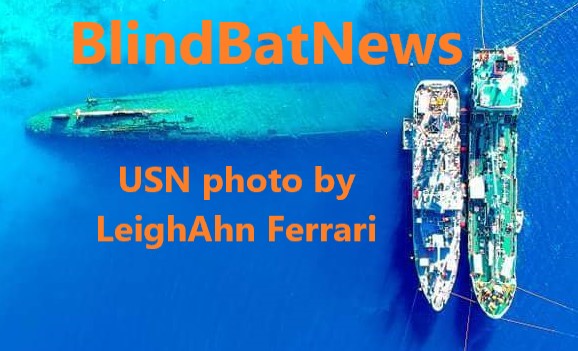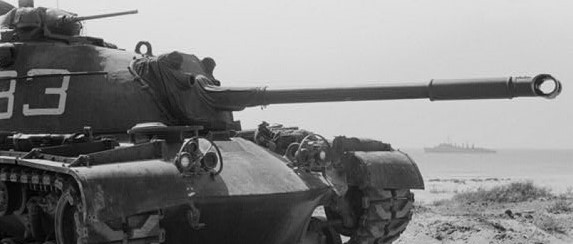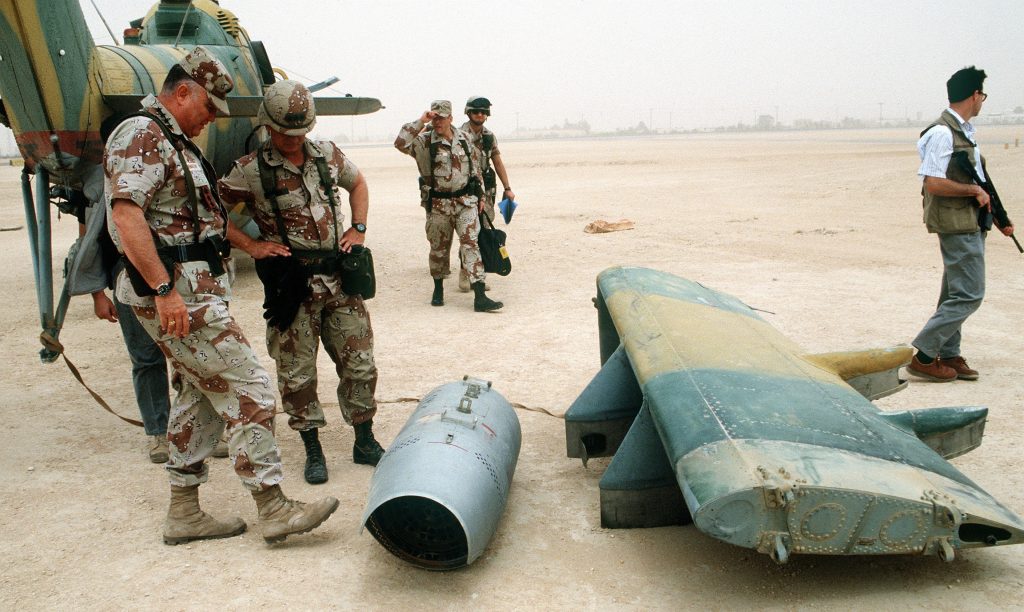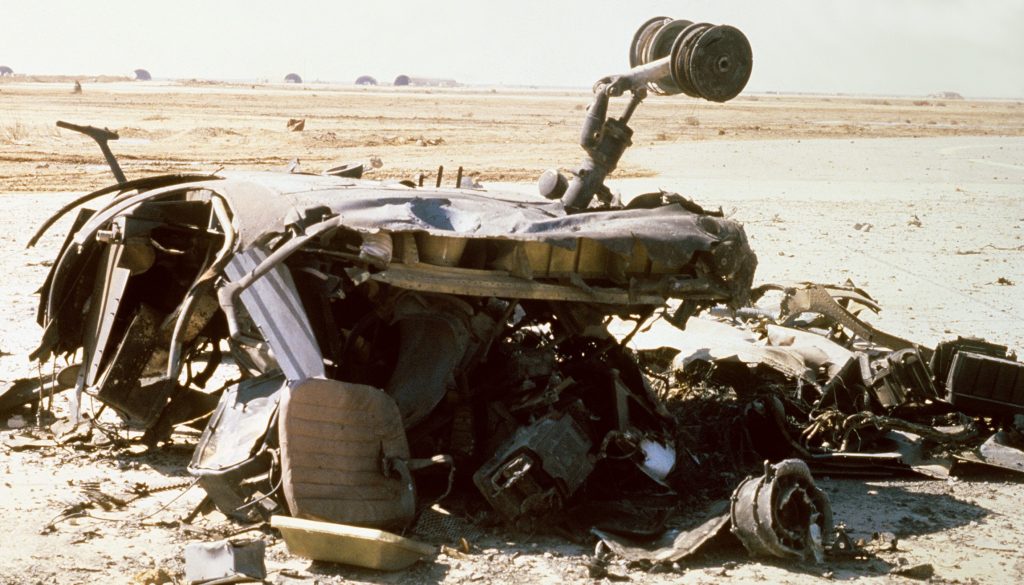“The Western Powers feared the complete disintegration of
the peace in the Middle East and the possibility of Soviet
exploitation of the crisis. The overt American reaction was
to send U. S. Marines to Lebanon on 15 July 1958….”– Marines in Lebanon 1958, USMC Historical Branch
Between the end of the Second World War and 1958, there was a lot of effort by the Western Bloc (capitalist Europe/North America) and Eastern Bloc (pro Soviet Europe/Asia) for control of the oil rich and predominantly Muslim world of Middle East and North Africa.
The power elite in Lebanon had always leaned towards capitalist Europe, even though the majority of the working class, including Druze and Shia Muslims, wanted true independence from Western influence. The elites of Lebanon were seen as puppets of the West, and the Soviet Union was seen as a supporter of people wanting independence.
In 1957, Lebanese elites signed onto U.S. President Dwight Eisenhower’s anti-communist policy, known as the Eisenhower Doctrine for the Middle East. This meant that the United States could invade Lebanon if it thought the country was under threat of being taken over by communists.
At the beginning of May 1958, the anti-elite editor of a newspaper was assassinated, the working class blamed the elites. First worker strikes happened, then riots, the U.S. Information Agency building was set on fire. Anti-government Druze and Muslims took control of several cities. Many Christians supported the elitist government.
Newsreel films showing some of what was happening in Lebanon:
General Fuad Chehab of the Lebanese Army, a Christian, was afraid to take action against the rebels due to the fact that most front line soldiers were Muslims, and he did not want a full blown civil war. Lebanon’s Army focused only on controlling lines of communications.
Then there were unconfirmed reports that Syria was sending special operation troops to help the rebels. Egypt was broadcasting anti-western radio announcements. Egypt and Syria had formed the United Arab Republic, which had support from the Soviet Union.
The elitist president of Lebanon asked the U.S. to intervene, but on 14MAY1958 was told no. U.S. officials seemed to think a U.S. invasion would only make the situation worse. However, a full two months later there was a violent anti-monarchy coup in Iraq. Iraq had been ruled, since the end of the First World War, by a puppet monarchy installed by the United Kingdom. The puppet king and his entire family, and employees, were killed. The 14JUL1958 Iraqi coup resulted in the end of the pro-British/pro-Western Iraq-Jordan Alliance. The president of Lebanon took advantage and demanded that the U.S. intervene in his country, hyping up a possible Soviet take over of the Middle East.
But here’s the oil industry connection; Iraqi oil flowed to the Western countries via pipelines that ran to the ports of Tripoli, Lebanon! The threat of losing Iraqi oil was the fire that got the U.S. moving, and amazingly fast. In just one day, the 14th of July, President Eisenhower met with Congress, then ordered the U.S. Sixth Fleet to invade Lebanon.
It turns out the Sixth Fleet was already off shore, with additional U.S. Marines than what was considered normal, because of a November 1957 directive to prevent any coup from overthrowing the British installed puppet king of Jordan! Iraqi oil pipelines run through Jordan before terminating in Tripoli, Lebanon.
Silent U.S. Information Agency film showing International Harvester and Opel Blitz fuel trucks at the Tripoli tank farm, and Tripoli oil refinery operations:
Because of fears of an overthrow of the ‘king’ of Jordan, the U.S. Navy had already made invasion plans, they simply modified them for Lebanon, calling it Plan Blue Bat. And yes, the British had their Royal military onboard as well (units already based on Cyprus). The invasion began at 15 hours after midnight, on what was called Khalde/Red Beach near the Beirut Airport, 15JUL1958.
Silent USMC film, by somebody with the last name of Hartzel, of Marines on the docks of the Port of Beirut, 21JUL1958:
The Marines were not met by rebels or soldiers, but by well-to-do vacationers as the beach was a tourist spot. Then there were the villagers of Khalde, and the road crews that were busy building a new road: “Witnessing the assault were bikini-clad-sunbathers, Khalde villagers that had galloped on horseback to the site, and the beach workmen who had dropped their tools and had run to the shore. As the fully armed Marines charged over the sand, these civilian observers waved and some even cheered.”— Marines in Lebanon 1958, USMC Historical Branch
The initial Marine Corps landing was completed after only 20 minutes, and without a shot!
This is a silent film, via the U.S. Information Agency, of U.S. Marine Corps LVTP5s and M50 Ontos, showing what might be the 10SEP1958 joint USMC/U.S. Army beach assault exercise, the guys riding on top of the Ontos are supposedly Lebanese Army officers, notice the crowd of spectators:
U.S. Information Agency film of U.S. Army (USA) H-34 Choctaw helicopters taking part in the joint USA/USMC beach exercise, 10SEP1958:
General Chehab of Lebanon’s Army was outraged, he had just won concessions from the rebel groups, but this invasion by the U.S. and U.K. threw everything out the window. Documents claim the U.S. Ambassador to Lebanon tried to wave-off the invasion, but for some reason the radio in the embassy wouldn’t work. Yet somehow, the U.S. Navy officer in charge was able to radio a message to the U.S. Ambassador: “I am operating under orders from Commander Sixth Fleet and Commander in Chief Specific Command
Mediterranean who in turn are operating under orders U.S. President. All troops have landed and will remain ashore in vicinity airport until further orders.”
The U.S. officer in charge had stated their goal was to hold the Beirut Airport, but then it was decided to move into Beirut to protect the U.S., French and British embassies. There were several incidents where the Lebanese Army blocked the U.S. Marines, but no shots were fired. General Chehab suggested different routes, but the general of the USMC units refused. Finally, General Chehab agreed to ride with the USMC, but insisted that Muslim areas should be avoided.
On 17JUL1958, two U.S. Marines wound up in a Muslim area and were captured. They were turned over to the Lebanese Army, which immediately returned them to their USMC unit. There are indications that the U.S. Marine officers in charge could not understand that Lebanon’s politics and religions were an inherent part of Lebanon’s military. In fact, it seems most members of Lebanon’s parliament were protesting the U.S. invasion, it was looking more and more like Lebanon’s president was a puppet of the U.S.
Despite the fact that U.S. Deputy Under Secretary of State Robert D. Murphy, and USN Admiral James Lemuel Holloway the Third, agreed that what was going on in Lebanon had nothing to do with the world-at-large, East vs West, international game playing, more U.S. forces flooded into Lebanon!
Also on 17JUL1958, the ‘King’ of Jordan suspected a coup against him and asked for help from the British, who gladly sent in paratroopers. But this upset Plan Blue Bat, which called for British troops to take over control of Beirut Airport. This is where the U.S. Army (USA) comes in. The USA’s 24th Airborne Brigade was sent in. Just like the USN, since November 1957 the USA had planned for an invasion of The Middle East, and was ready to go. In this case the 1st Airborne Battle Group, 187th Infantry, based in Germany, had been on alert for possible deployment to Lebanon since 15JUL1958.
Let’s not forget the U.S. Air Force (USAF). The first USAF units had flown to Adana, Turkey on 16JUL1958. The USA’s airborne troops began arriving on Adana, Turkey, on 17JUL1958, then moved to Beirut Airport on 19JUL1958. Immediately, infighting between the USA, USAF and USMC began over who was in charge of the whole Blue Bat Plan. That was settled on 23JUL1958 when a USA Major General was made Commander In Chief, American Land Forces, Lebanon.
This whole time there were ongoing firefights between rebels, Lebanese police, U.S. forces, with nobody apparently getting killed. The USA continued to pour in more troops and equipment. By the end of July, the USA and USMC had created a 20 mile perimeter around Beirut.

M48A1, photo by Thomas J. O’Halloran, July 1958.
With so much men and material being poured into such a small area, storage and living space became a problem. U.S. Marines were getting sick due to insects, lack of toilets and lack of medical units.
U.S. Information Agency film showing the increasingly crowded conditions within the 20 mile perimeter:
Deputy Under Secretary of State Robert D. Murphy, and USN Admiral James Lemuel Holloway the Third, realized that the reason the people of Lebanon were so upset was because of their elitist president, it had nothing to do with communism or religion. The two, apparently only wise-men from the U.S., believed the solution was a new presidential election. An impromptu parliamentary election was held and General Fuad Chehab became the new president. However, U.S. Secretary of State John Foster Dulles said U.S. forces would remain until the Lebanese government asked them to leave, and ironically General Chehab now liked having the U.S. forces around!
U.S. Information Agency silent film showing USA M48A1 Pattons, with long range fuel tanks, being put back onto U.S. ships in the Port of Beirut:
On 23OCT1958, Lebanon formed a new parliament, and even though there were ongoing spats of fire fights between factions in Lebanon, the United States pulled all its forces out of Lebanon on 25OCT1958.
It should be noted that the coup in Iraq did not affect the flow of oil to the West as the Iraqi Petroleum Company remained in private capitalist hands until 1972, and the expected coup in Jordan (where the Iraqi oil pipelines run through on their way to Lebanon), aka the Jordan Crisis, never happened.
Cold War 1961:  BERLIN KRISE, ‘GAME OF CHICKEN’ U.S. M48A1 VS. USSR T-54/55!
BERLIN KRISE, ‘GAME OF CHICKEN’ U.S. M48A1 VS. USSR T-54/55!
2019: A FLYING M48A1? OR, HOW TO PAINT YOUR 1:1 SCALE M48A1.
Vehicle I-D: LVTP-5, LVTR-1, LVTE-1, LVTH-6

 1939 V 2019; GERMANY INVADES POLAND AGAIN, THIS TIME WITH THE HELP OF NATO!
1939 V 2019; GERMANY INVADES POLAND AGAIN, THIS TIME WITH THE HELP OF NATO! DKM PRINZ EUGEN 2018, OR THE NINE ANCHORS
DKM PRINZ EUGEN 2018, OR THE NINE ANCHORS


































































































































